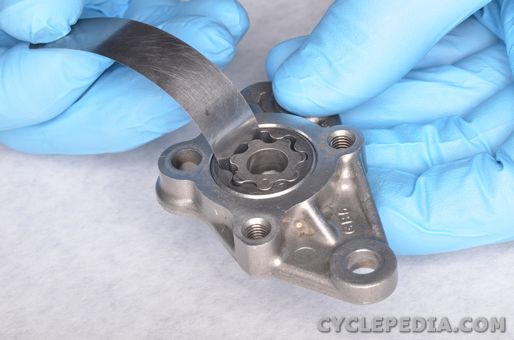No. Still dry sump oil dribble over ths gears may be the problem or some incredibly rough down changes. Know more when I get it apart.
No. Still dry sump oil dribble over ths gears may be the problem or some incredibly rough down changes. Know more when I get it apart.
Page 1650 .....
Numerical Analysis of a 2T engine with various fuel injection options.





If there's a gear running on a bush on the shaft, you will need an internal feed too...Found this with GSXR boxes, the bush for 3rd in the middle of the 6 speed 750 box was the weak spot. Up the feed to it and you could put the 750 box in an 1100.
But of course it's an old box too....
Finding a suitable gearbox oil pump has been a bit of a mission. Tried quite a selection of pumps, they all failed at some point or other. There have been vacuum diaphragm pumps, electric centrifugal pumps and plunger pumps. 12V garden feature water pumps, pressure diaphragms and fuel pumps. Mostly 1-3 l/min, 5 l/min seems ideal, inexpensive with low current draw is a must.
My favorite was a Toyota windscreen washer pump, took 3 amps and delivered a good jet of oil but over heated after a few minutes and stopped but would always restart after a rest, protected by an internal thermal overload switch I guess.
Not sure yet if the gearbox implosion is a lack of oil problem or the really really rough downshifts on the dyno when the motor cut out, probably both. Performing a gear box autopsy soon.
I have a couple of these coming. they look like they are meant for continuous operation. Their intended use is to supply water to concrete cutters. Current demand, flow and pressure all look good. Looks like a slightly bigger version of the Toyota windscreen wiper pump.
- Adapter Output voltage: 12V 3A
- Water pump voltage: 12V
- Power: 30W
- Adapter plug: US plug
- Lift: Approx. 6 meter / 19.7ft
- Flowrate: 6L/M
- Water inlet: Approx. 16mm
- Water outlet: Approx. 6mm
- Water pump size(HxD.): Approx. 88mm x 32mm / 3.46inch x 1.3inch
- Working temperature: 0-80℃





Have a look at the little Honda 4T single oil pump - CB100 upwards. Narrow gerotor pump which could be driven by an oldham coupling or similar off the end of a gearbox shaft. Heaps of them around too. Minimal power loss I'd think.

Kinky is using a feather. Perverted is using the whole chicken





That CRF50 pump looks like the gerotor setup from the CB singles in a different body. Probably is too, if something works, Honda seldom change it....
Its def a smaller housing, smaller gears likely, narrower too i think. i could compare them i have one of each somewhere, i have a high output takakawa crf50 one, Rob is welcome to it if he wants it.
The Pitbike ones i think have plastic drive gears likely recycled wok internal gears as well.
hers is an inside pic crf70


Kinky is using a feather. Perverted is using the whole chicken
Yes, Jan would do a dual disc now.
Is it fair to say...? Well, yes and no. The RSA was an improvement over the side-disc RSW alright, but not by as much as Jan had hoped for.
But as the RSA was winning GPs, Aprilia-management decided not to spend any time and money on development; there may have been a few more horses in there, waiting to be unleashed.
You're right about the RSA250's rotation direction being reversed, compared to the RSW250. The various shafts in the engine were moved about in order to make it more compact. In the RSW the top crankshaft was driving the clutch; in the RSA it was the bottom crankshaft.
Left to right: RSW250, RSA250, RSA250.




Kinky is using a feather. Perverted is using the whole chicken
Those gear pumps look the business, unfortunately I think TZ had to cut the starter gear off the back of the clutch so he could fit that big KE175 rotary valve. The starter gear also drove the Posilube pump otherwise he could put one of these where the original Posilube oil pump was. Maybe he could drive one directly off the outer end of the gearbox input shaft.
Feedback from the teams to the racing department was severely discouraged by the technical director; must have been a case of 'divide and conquer'.
And Jan Thiel did not concern himself with the cycle parts at Aprilia anyway, so I cannot quote on any rider reports.
As far as I know the main reason for the layout change was to alter the position of the gearbox output shaft.
There are currently 10 users browsing this thread. (0 members and 10 guests)
Bookmarks